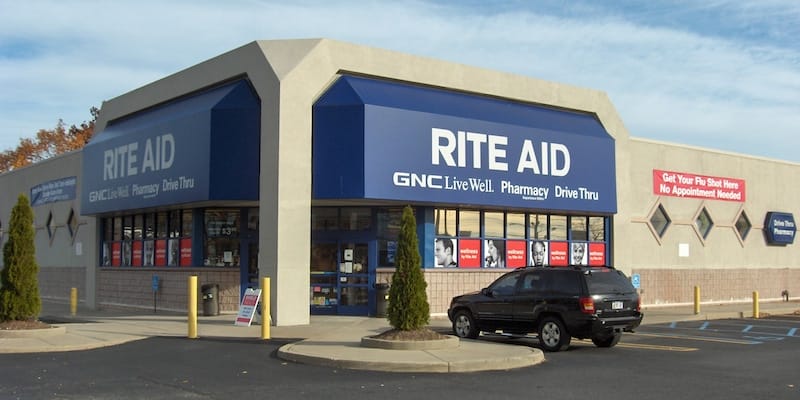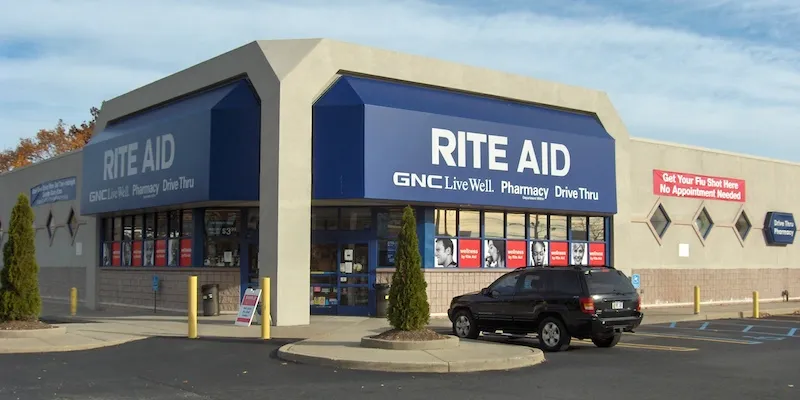
CAMP HILL, Pa. — Rite Aid Corp. topped Wall Street’s earnings projections for its fiscal 2018 third quarter, in which the company proceeded with the transfer of stores under its $4.375 billion asset sale to Walgreens Boots Alliance (WBA).
Rite Aid said late Wednesday that for the quarter ended Dec. 2, net income totaled $81 million, or 8 cents per diluted share, compared with $15 million, or 1 cent per diluted share, a year earlier.
From continuing operations, Rite Aid posted a net loss of $18.2 million, or 2 cents per diluted share, versus net income from continuing operations of $23.6 million, or 2 cents per diluted share, in the prior-year period. The company said the decrease in operating results stemmed mainly from a decline in adjusted EBITDA (earnings before interest, taxes, depreciation and amortization), partially offset by a higher income tax benefit.
On an adjusted basis, net earnings from continuing operations were $1.6 million, or 0 cents per diluted share, compared with $26.8 million, or 3 cents per diluted share, a year ago. Rite Aid said the decrease reflected a decline in adjusted EBITDA, partially offset by a reduction in adjusted income tax expense.
Analysts, on average, had projected an adjusted net loss of 2 cents per share for the 2018 third quarter, with estimates ranging from a net loss of 2 cents per share to a net loss of 1 cent per share, according to Thomson Reuters.
For the quarter, adjusted EBITDA from continuing operations came in at $129.2 million, or 2.4% of revenue, versus $191.3 million, or 3.4% of revenue, a year earlier. According to Rite Aid, the decline reflects decreases of $50 million in the retail pharmacy segment and $12.1 million in the pharmacy services segment.
Retail pharmacy segment EBITDA fell mainly due to a decline in pharmacy gross profit, a continued decline in reimbursement rates that the company wasn’t able to fully offset with generic drug purchasing efficiencies, and lower script counts, Rite Aid said. Lower net favorable legal settlements of about $15 million, as compared to the prior year, also impacted results. These items were partially offset by an improvement in front-end gross profit and cost control, the company noted. The decrease in the pharmacy services segment EBITDA stemmed primarily from the decline in revenue.

John Standley
Rite Aid noted that results from continuing operations reflect corporate administration costs that support both continuing and discontinued operations. As the store sale to WBA continues, the company will perform back-office functions under a transition services agreement (TSA) for those stores and receive a fee for the services. Rite Aid said this fee would be $96 million on an annualized basis, assuming all of the divested stores are covered under the TSA. Quarterly and year-to-date results from continuing operations for both years don’t include $24 million and $72 million of fees, respectively, that would be earned if all stores were being supported under the TSA.
“Our pro-forma adjusted EBITDA from continuing operations for the third quarter of $153 million, which includes $24 million in fees that would have been received if all of the divested stores were being managed under the TSA as of the beginning of the period, was in line with our expectations,” Rite Aid chairman and chief executive officer John Standley said in a statement.
Rite Aid announced in late November that it had transferred the first group of stores — 97 locations and related assets — to WBA.
“The third quarter was a busy time for our team in preparing for and beginning the transfer of stores and related assets to Walgreens Boots Alliance,” Standley explained. “I would like to thank our entire Rite Aid team for their dedication and efforts in accomplishing this important business initiative for our company and our shareholders. To date, we have transferred 357 stores and have received approximately $715 million in proceeds, which we have used to pay down debt.”
Rite Aid said that the company and WBA expect to continue to transfer ownership of the stores in phases during the coming months. Since most of the closing conditions have been satisfied, and the subsequent transfers of Rite Aid stores and related assets are subject to minimal customary closing conditions applicable only to the stores being transferred in those phases, Rite Aid classified the assets and liabilities to be sold to WBA — 1,932 stores and three distribution centers — as held for sale and the corresponding operating results and cash flows of those stores as discontinued operations in its financial statements.
“Looking forward, in addition to completing the transfer process, we will continue to focus on our most significant business-building opportunities as we work together to deliver a great experience to our customers and patients,” Standley added.
On the sales side in the fiscal 2018 third quarter, Rite Aid posted revenue from continuing operations of $5.35 billion, down 5.6% from $5.67 billion a year earlier.
Retail pharmacy segment sales fell 3% to $3.96 billion from $4.08 billion in the 2017 quarter, mainly from a decrease in same-store sales and reimbursement rates, Rite Aid reported. Pharmacy services segment sales were $1.45 billion, down 12.2% from $1.65 billion a year ago because of an election to participate in fewer Medicare Part D regions and a decrease in commercial business, the company said.
Samestore sales from continuing operations in the quarter were down 2.5% year over year, reflecting decreases of 0.5% in the front end and 3.5% in the pharmacy. Rite Aid noted that pharmacy sales included a negative impact of 198 basis points from introductions of new generic drugs.
Comparable-store prescription count, adjusted to 30-day equivalents, declined 2.4%, which Rite Aid attributed in part to exclusion from certain pharmacy networks that the company participated in the prior year. Prescription sales from continuing operations represented 66.5% of total drug store sales.
During the third quarter, Rite Aid opened one store, relocated nine stores, remodeled 20 stores and expanded one store, bringing the total number of stores with its Wellness format to 2,505. The company also sold 97 stores to WBA and closed seven stores in the quarter, for a total store count of 4,404 as of Dec. 2.
Also on Wednesday, Rite Aid announced that its board of directors has adopted a tax benefits preservation plan to maintain the company’s ability to use its net operating loss carryforwards and other tax attributes. Rite Aid said that as of the end of the third quarter on Dec. 2, it had federal net operating loss carryforwards totaling about $2.7 billion.
According to Rite Aid, the plan is intended to ensure that it will be able to use the tax benefits in connection with the asset sale to WBA.
Rite Aid noted that its ability to use the tax benefits would be substantially limited if it experienced an “ownership change” as defined under Section 382 of the Internal Revenue Code. In general, an ownership change would occur if Rite Aid shareholders treated as owning 5% or more of the company’s outstanding shares for purposes of Section 382 collectively raise their aggregate ownership in overall shares outstanding by more than 50 percentage points, Rite Aid said.









